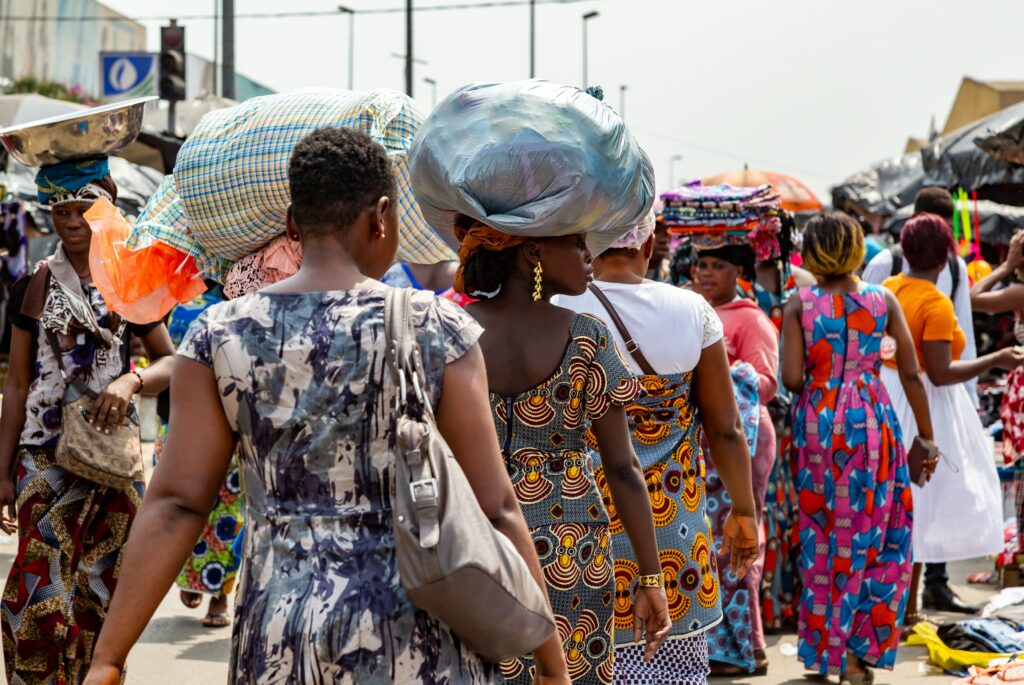The world now has the largest generation of young people in history – 4 billion people (about half of the world’s population) are below 30 years of age. Approximately 3.5 billion of them are living in developing countries. These young people are digital natives, born at a time of rapid technological change and digitalisation. However, a staggering 1.3 billion of them are disconnected from the digital world.
While the digital revolution has changed the way we live, work, and connect, it has also created a big divide – one that is especially visible between urban and rural youth in developing countries like Kenya. This divide not only limits their access to information but also hinders their ability to contribute to and benefit from the opportunities that digitalization offers.
As we mark International Youth Day 2024 themed “From Clicks to Progress: Youth Digital Pathways to Sustainable Development,” it is important to examine the systemic factors perpetuating this divide and explore solutions to ensure that all youth, regardless of their ethnicities, religion or location, are equipped to benefit from the digital world.
Youth and digital tools are central to our work at Thellesi Trust. As a youth-led organisation, we not only use digital tools to streamline our internal operations and enhance our visibility, but also to share our story. More importantly, we leverage digital platforms such as social media and the Internet to reach, connect, and engage with young people across the country on matters of active citizenship. Our approach is simple: every young person is eager to connect, and through this connection, they gain access to information that shapes their mental models and influences what they care about. It is therefore essential to engage with them in these digital spaces, nudging them to be active contributors to positive change in their communities.
Intersecting, Systemic Factors Perpetuating the Digital Divide
The digital divide results from several deep-rooted, systemic inequalities that intersect to keep rural youth disconnected. Firstly, infrastructure disparities play a significant role. Urban areas are usually prioritised for internet and telecommunications development, leaving rural areas with limited or no connectivity. As an example, the fibre-optic cable comes into Kenya through the port city of Mombasa, but surrounding coastal counties such as Kwale, Kilifi and Taita Taveta have some of the lowest network connectivity. You will find more internet service providers in Nairobi, Kisumu, Nakuru and Eldoret than you will find in less urbanised areas. Perhaps the cost of extending infrastructure to remote regions is often deemed too high, resulting in this disparity.
Secondly, economic factors contribute to the divide. Even in areas where digital infrastructure exists, the high cost of devices and data plans puts them out of reach for many rural youth who earn below minimum wage. Youth in rural places rely on casual, low income jobs, making the acquisition of digital tools less of a priority compared to basic needs.
Thirdly, low levels of literacy among rural youths further widen the gap. Urban youth often have better access to quality education, which includes digital literacy programs. In contrast, rural schools lack the resources, trained teachers, and infrastructure needed to provide even basic education, let alone digital education. Without digital literacy, even when rural youth gain access to digital tools, they may take longer to learn how to use them effectively, or may not be able to use them effectively at all.
Fourthly, there are social and cultural factors at play that cannot be overlooked. Most rural communities are deeply rooted in their cultures, which often include gender roles that limit girls’ participation in modern ideas and practices. For example, early marriages and the idea that women’s roles are primarily domestic result in girls having even less access to digital literacy and technologies than boys.
Finally, there is the role of systemic marginalisation, which refers to the persistent and entrenched exclusion of certain regions and communities from socioeconomic and political opportunities. It is deeply rooted in historical, political, economic and social factors that have resulted in significant inequalities across the country. Regions such as the northern, northeastern and coastal parts of Kenya have been most affected by this, remaining very rural despite the developments of the 21st century. For example, a youth is far more likely to lack an ID (therefore access to government services) and be functionally illiterate if they come from these places than if they come from central Kenya.
Also Read: We Will Not Achieve the SDGs Unless We Get Dirty With The Details
Systemic Solutions to close the Digital Divide
Addressing the digital divide requires systemic solutions that go beyond providing access to technology; it involves creating an ecosystem where digital tools can be effectively utilized by young people to improve their lives. For example:
Infrastructure development must be a priority. National and county governments, in collaboration with private sector partners need to invest in expanding digital infrastructure to rural areas, ensuring that all youth, regardless of location, have access to reliable and affordable internet. This infrastructure includes providing last-mile connectivity, consistent electricity and ensuring reliable internet network.
Economic support mechanisms for rural and marginalised communities and youths. For example, subsidies for digital devices like smartphones and computers, as well as data plans, could make technology more affordable and accessible for rural youth. Additionally, national and county governments could collaborate with private sector and development partners to invest in such things as digital hubs that offer free training to young people, giving them a chance to interact with digital devices and use digital platforms such as he internet and social media.
Most importantly, we reckon that there should be a deliberate integration of digital literacy into school curricula across the country, not just in urban schools. Governments and Nonprofits should collaborate to provide training for teachers in rural areas, equipping them to teach digital skills in not just the schools but also the digital hubs mentioned in the previous point.
Lastly, frequent and intentional Community engagement should be done to raise awareness about the benefits of digital technologies and sensitise young people to enrol.
The Opportunities Digitalization Offers
The intersection of youth energy, creativity and innovation with digitalisation offers great potential to accelerate the achievement of the Sustainable Development Goals (SDGs). Like in many other industries, digitalisation makes work easier, allowing us to work more efficiently, realising outcomes faster. It allows us to build tools that improve life’s experience. It connects people from all over the world allowing them to showcase their work, exchange ideas share opinions and even tell unique stories.
Digital tools empower youth to access educational resources, from online courses to e-libraries, which can significantly enhance their learning experiences. For instance, platforms offering free or low-cost courses can help bridge the educational gap between urban and rural youth, providing them with skills that are essential in the modern world.
Moreover, digital technologies open up new avenues for economic empowerment. Through e-commerce platforms, rural youth can access broader markets for their products, while digital payment systems enable them to participate in the global economy. Digital tools also facilitate entrepreneurship, allowing young people to start and scale businesses with minimal initial investment.
Digitalisation can promote democracy, good governance and active citizenship, by providing youths with a means to organise, mobilise, advocate and amplify their voices on issues that matter to them. Governments and change-makers can use social media and other online platforms for civic education and participation, enabling youths to influence policies and drive change in their communities.
Watch a snippet of our International Youth Day 2024 comments on this link.
We would love for you to contribute to our work in any way. Write to us on [email protected], or comment below.
Cheers!


